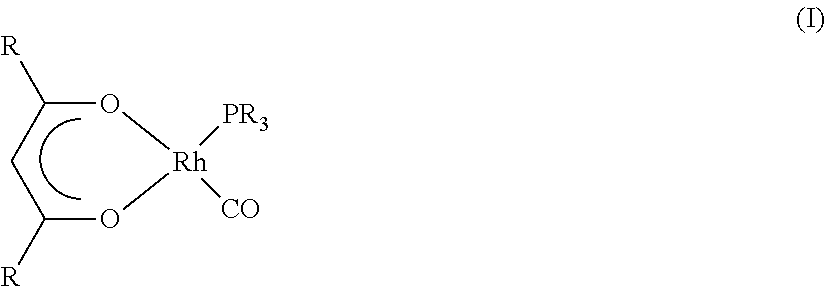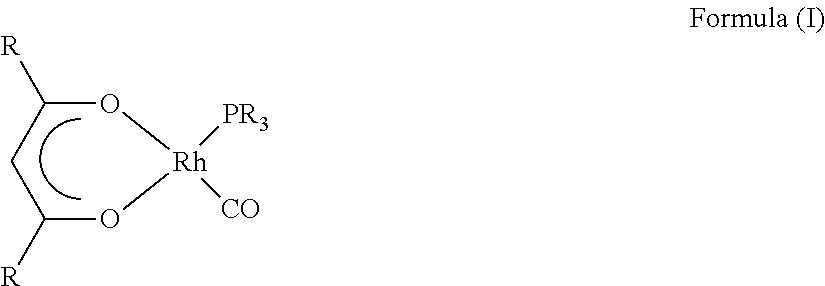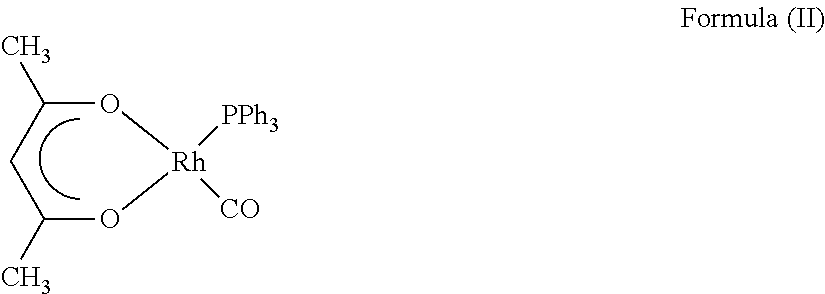Process for preparing diketonato-rhodium(i)-carbonyl complexes
a technology of diketonato-rhodium and complexes, which is applied in the preparation of carbonyl compounds, organic chemistry, chemistry apparatus and processes, etc., can solve the problem of time-consuming process
- Summary
- Abstract
- Description
- Claims
- Application Information
AI Technical Summary
Benefits of technology
Problems solved by technology
Method used
Image
Examples
example 2
[0073]40.0 g of rhodium (0.39 mol) in the form of 101.9 g of Rh(III) chloride hydrate (Umicore product no. 68.2562.1138, 39.25% Rh content), 437 ml of acetylacetone (4.29 mol) and 431 ml of ethanol (technical grade) are placed in a 1 l double-wall reactor provided with reflux condenser, precision glass stirrer and gas inlet tube. The mixture is treated while stirring with a CO gas stream of 20 l / h and at the same time heated to 60° C. These conditions are maintained for 13 h, and the mixture is subsequently cooled to about 30° C. The CO gas treatment is stopped. 326.5 g of NaHCO3 are subsequently introduced in small portions into the solution over a period of about 30 minutes. This results in liberation of CO2. The mixture is stirred for one hour. 105.0 g (0.4 mol) of triphenylphosphine are subsequently dissolved in 400 ml of toluene and added while stirring vigorously to the reaction mixture over a period of 20 minutes. Immediately afterwards (without an intermediate stirring time)...
PUM
 Login to View More
Login to View More Abstract
Description
Claims
Application Information
 Login to View More
Login to View More - R&D
- Intellectual Property
- Life Sciences
- Materials
- Tech Scout
- Unparalleled Data Quality
- Higher Quality Content
- 60% Fewer Hallucinations
Browse by: Latest US Patents, China's latest patents, Technical Efficacy Thesaurus, Application Domain, Technology Topic, Popular Technical Reports.
© 2025 PatSnap. All rights reserved.Legal|Privacy policy|Modern Slavery Act Transparency Statement|Sitemap|About US| Contact US: help@patsnap.com



